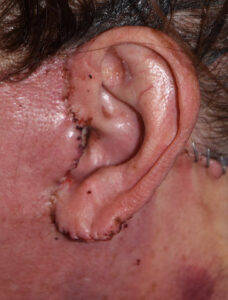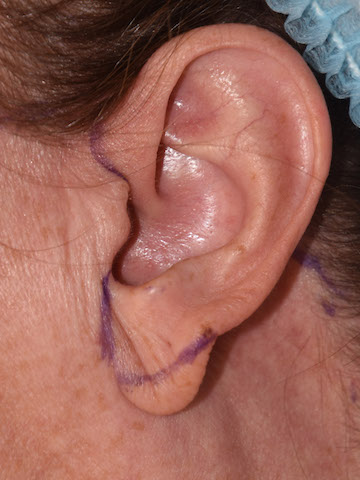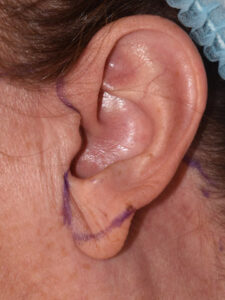The most common major facial rejuvenation procedure is a facelift. While facelift surgery is available in many different variations, one fundamental principle of its performance is the need to place incisions in and around the ears. This almost always involves the earlobes which is also critical during the closure of these incisions at the conclusion of the procedure. Appreciation of the patient’s natural earlobe anatomy (attached vs non attached) and its current size is an important assessment for facelift surgery.
It is not uncommon that facelift patients, particularly females, present with long or enlarged earlobes. Particularly in unattached earlobes they may appear bigger after the surgery when the repositioned facelift skin flap is tucked up under the earlobe. (it will always initially appear larger due to swelling) This is an ideal time to reduce an enlarged earlobe at the time of a facelift closure.


When reducing an earlobe at the time of a facelift it is usually better to be more aggressive than conservative. This often means an ear ring hole may be lost as a result. But it is a rejuvenative procedure for the ear and new holes can always be made.
Dr. Barry Eppley
Indianapolis, Indiana





